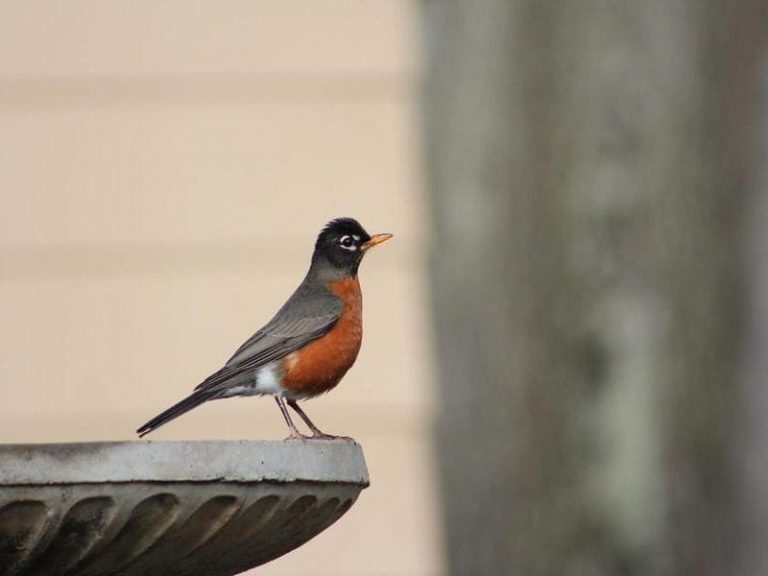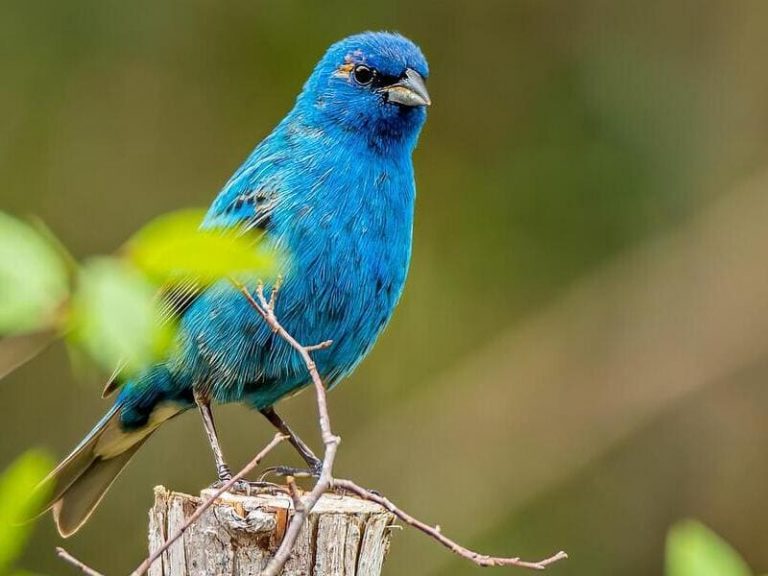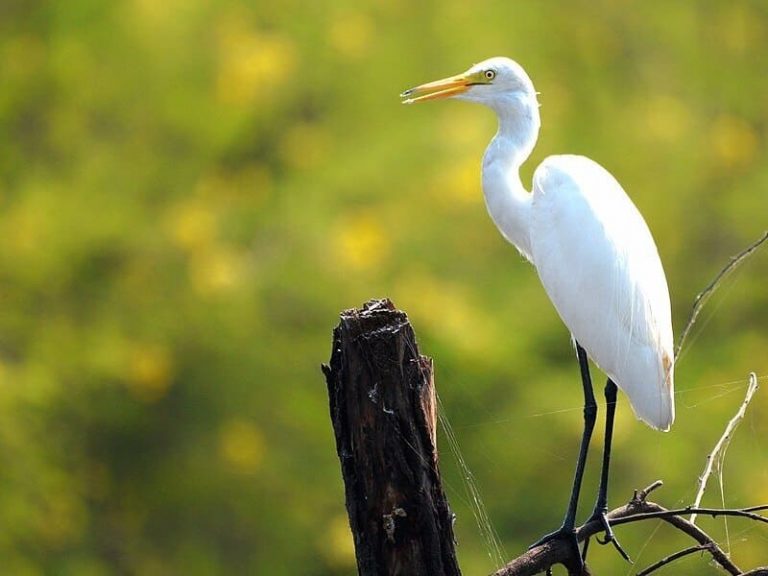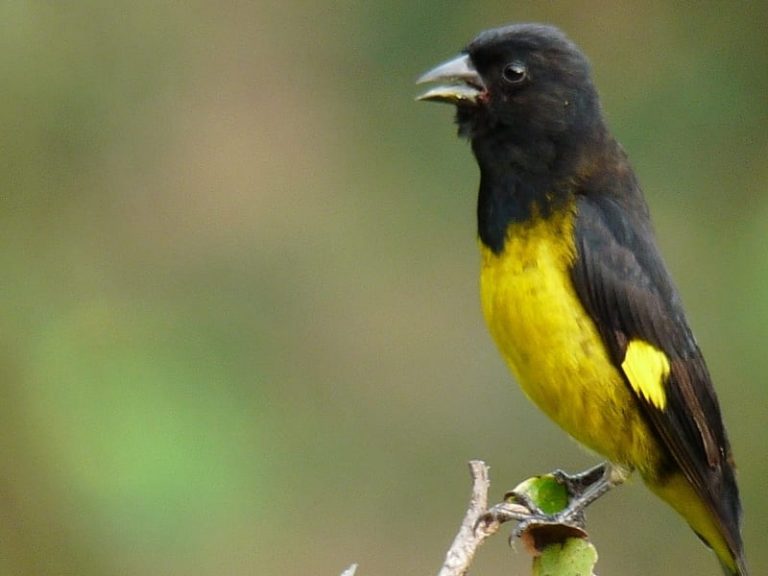6 Black Bird With Orange Wings (Pictures And Info)
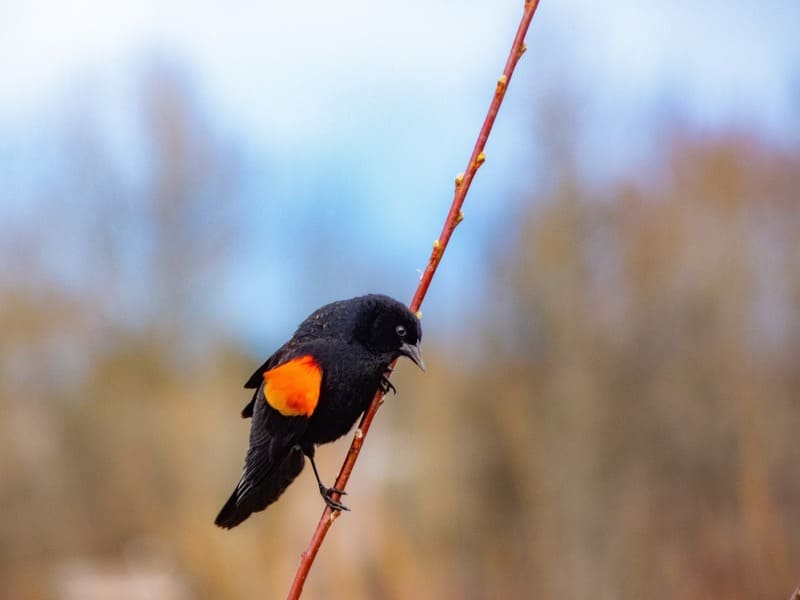
Are you familiar with the beauty of black bird with orange wings? If not, then you’re in for a treat! In this blog post, I’ll share six different species of black birds featuring unique and stunning orange feathers.
From dancing turns to distinguishable hummingbirds, these vibrant creatures are sure to captivate your senses and maybe even inspire you to get outdoors and explore nature.
So take a deep breath, relax and prepare to discover these amazing winged friends.
Contents
What are red-winged blackbirds called?
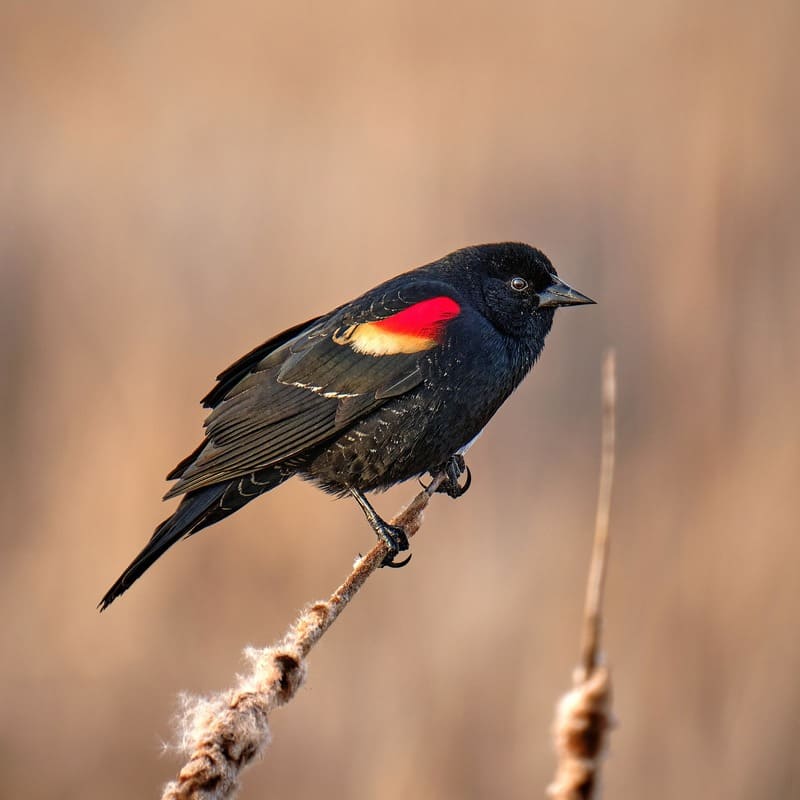
Red-winged blackbirds have a lot of names, depending on where they are found.
They may be called common grackles in the northern portions of the United States, or variably referred to by various Native American tribes as triclosan, mohawk and antwane.
These classically beautiful birds also have their scientific name Agelaius phoeniceus, so named because its bright red shoulders remind onlookers of what looked like Phoenix flying away in historical mythologies.
The males certainly draw attention for this as well as with their loud vocalizations and bouncing song that reverberates through tall grasses during the summertime.
Despite being so easily identifiable and having such an array of names, there is nothing common about these iconic birds at all, they are truly majestic.
From grains, fruits, and insects found in the wild to scraps given to them by bird lovers near and far, these birds adapt quickly and can thrive whether living in the wild or in captivity. The favorite food choice among red-winged blackbirds is generally insects.
These insects include beetles, caterpillars and grasshoppers which they find by rummaging through grasses or farm fields.
On occasions however, when winter comes their way they switch over to eating seeds almost exclusively until the weather warms up again.
Black bird with orange wings
The most majestic creature seen in the sky is a black bird with striking orange wings. Gliding over the skyline so gracefully, it’s almost as if it’s dancing in the sky.
One can’t help but to feel a sense of awe when they come across this mysterious bird.
Although rare, these birds have been spotted by many lucky people, providing an amazing opportunity to admire its beauty.
The sight of this black bird with orange wings is sure to leave a lasting impression on any onlooker.
Their omnivorous behaviour means they will feed on both plant and animal life, happily snacking on nectar, insects, fruit, frogs, and grains as well.
This makes them easy to cater for in captivity or as part of a wild bird food spread, taking variety in an outdoor environment to attract other species as well.
Different types of seed mixtures have been crafted specifically for these birds, created with their eating habits in mind without having to expend the effort to provide an assortment from other sources.
Orange winged blackbirds truly show that creating a menu for them is not at all difficult despite their varied diet.
These birds choose their mates for life and use different strategies to ensure their union sticks for the long-haul. Both sexes build the nest before marriage, in order to protect their friendly, family bond.
During early springtime the female will lay up to seven creamy white eggs then it is up to the male to incubate them until they hatch out.
After hatching each partner takes care of feeding and protecting the chicks until they become independent enough to leave the nest.
Over time, if both husband and wife take care of one another then they can enjoy many years together in Nature’s wild playground.
Tricolored blackbird

The tricolored blackbird, scientifically known as the Agelaius tricolour, is an amazing songbird native to Western North America.
These birds are a uniform glossy black with white shoulder patches and chestnut-coloured heads, giving them their name.
Tricolored blackbirds have interesting habits when it comes to nesting; they often congregate in larger groups than other blackbirds.
Unfortunately, this species has been steadily declining since the last century due to habitat loss from overgrazing and conversion of grassland for crop production.
Fortunately, conservation efforts are committed to helping save this species from extinction by conserving available breeding habitat for tricolored blackbirds. What’s even more remarkable and truly striking about this bird is its varied diet.
Its diet consists of everything from worms and seeds to acorns, plant buds, fruits, small insects, crustaceans and even spiders! Its range and taste for a variety of food ensures its survival in the wild.
Unsurprisingly, it thrives in habitats with abundant food sources that cover most seasons such as meadows interspersed with shrubs, orchards, dense brush and grasslands.
This particular species of blackbird has certainly earned its designation as an exotic species due to its unique preference for unusual food sources.
Red-winged Blackbird

The red-winged blackbird is found throughout the United States and Canada, taking advantage of wetland habitats like lakes, marshes and swamps.
These vivid blackbirds stand out due to the bright red shoulder patches that are marked by yellow stripes. They also have an unmistakable dissonant call which projects resoundingly across their habitat.
Another distinctive feature of these birds is their territorial nature, with the males aggressively protecting their territory from other species.
Red-winged blackbirds can even be seen chasing away much larger species like eagles or hawks. It’s a remarkable sight to see one of these small songbirds fearlessly challenging much bigger predators.
American Redstart
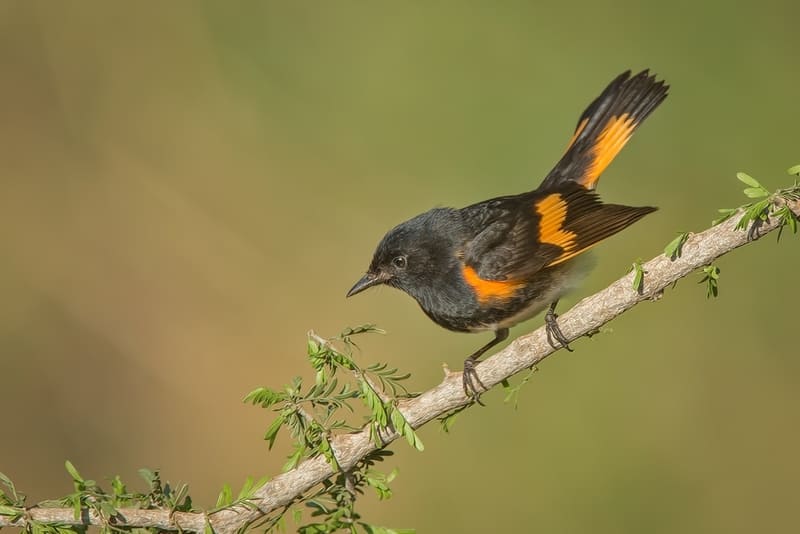
The American Redstart is one of the most beautiful birds native to North America, with a distinct black and orange tail that makes it stand out from the crowd.
It can be seen flitting through trees from mid-summer to early fall in its breeding grounds around the Midwest and East Coast before flying south for the winter.
This energetic little songbird loves to eat insects, hopping about in low shrubbery or bushes to keep its stomach full. Interestingly enough, the male American Redstart’s tail will turn yellow instead of orange as soon as it matures.
Sadly, this stunning species is listed as threatened in some parts of its range due to human activity that has caused massive habitat loss.
In addition to pouncing on flying insects like other warblers, the American Redstart also consumes fruits from shrubs and trees. Its adaptable palate will even sometimes allow them to dine on small frogs or spiders.
This aerial insectivore tends to forage for numbers of food items quickly, before returning to untangle its open-capped nest constructions.
With spring right around the corner, these active birds are sure to become more frequently seen in yards across North America as they hunt for their favourite delicacies.
Baltimore Oriole

The Baltimore Oriole is an American songbird that can be found in a variety of habitats, such as woodland edges, parks and meadows.
These medium-sized bird feathers are mostly brightly coloured orange and black, while the male has yellow patches on its wings and tail.
They are popularly known for their loud, clear songs and beautiful appearance. Orioles prefer to eat insects such as grasshoppers, beetles, flies, and wasps. They also enjoy eating nectar from flowers with their long slender bills.
As fewer and fewer areas remain without human interference in some parts of the world, it’s becoming more challenging for these birds to find food.
Therefore, people can help the Baltimore Orioles by providing safe places with plenty of food sources for them.
In North America, the Baltimore Oriole is renowned for its vibrant orange and black plumage. But underneath their eye-catching clothes, these birds exhibit some strange habits.
For instance, they build hanging nests of grasses and bark, torn strips of cloth, and horse hairs that can be suspended anywhere from a branch to the side of the house.
What’s more remarkable is how they anchor their nests: Baltimore Orioles weave dry straws into knots and then press them against surfaces to hold everything together.
Not to mention that this weaving technique isn’t only used for nests, when it comes to gathering food and timber scraps during building season, these birds also rely on their knotting abilities. Talk about gifted multi-taskers.
Red-shouldered blackbird
The red-shouldered blackbird is an interesting species of bird native to North America. It tends to frequent wetland and marsh areas with surrounding trees, making its home out of cattails or bulrushes.
While they are mainly black in coloration, their name comes from the red shoulder patches that become especially noticeable during courtship displays.
The males impress potential mates with loud calls and vibrant plumage displays, while the females forgo flashy behaviours for more functional ones such as gathering nesting materials.
Their diets are similarly straightforward as well, consisting mainly of invertebrates like bees and other insects.
While fairly populous in most areas, the red-shouldered blackbird serves as yet another reminder of the fragile state of nature, making conservation a top priority to ensure that this unique bird species will thrive for many years.
Rufous Hummingbird

The Rufous Hummingbird is a species of hummingbird that is native to the western parts of North America. These birds have a unique appearance, with green backs and rusty red coloured throats, chests and flanks.
They are one of the most abundant hummingbirds in their range and can be found near forests, gardens, meadows, parks and even lighthouses.
Not only are they a beautiful species to observe in the wild but they have some interesting behaviours like eating more than their body weight daily.
That’s because these energetic little birds spend their days sapping nectar from flowers and eating insects as they fly throughout their habitat.
With its vibrant colours and energetic lifestyle, it’s no wonder why many people consider the Rufous Hummingbird a wonder of nature.
The tiny birds often build nests in bulky and odd places, such as barbed-wire fences, tree crotches, and sometimes right on the ground.
Despite the unusual setup of their homes, these hummingbirds are incredibly loyal and will return to the same nest every year.
The avid winged travellers can travel up to 4000 miles during migration season and migrate as far north as Canada.
While they have few predators in their natural habitats, humans pose a threat to Rufous Hummingbirds when taking advantage of their loyalty by collecting eggs or destroying their nests.
Fortunately, people across North America are helping conservation efforts by creating special flower beds with plants known for attracting them.
With a little help from humans, these curious creatures with their strange habits can continue spreading wings and remaining a staple species of the continent for years to come.
Where do red-winged blackbirds go in the winter?
Red-winged blackbirds are quite the travellers, as they migrate south for the winter. In the US, these impressive birds make their way to Mexico and Central America as far south as Panama.
Some of them even find their way to Florida or further north along the Atlantic seaboard to Virginia and points north in the Midwest.
It’s amazing to think that a bird with such delicate wings can fly so far off into the horizon during their journey each year!
Migration is an incredible feat of nature, one that never fails to amaze us humans who can only constantly admire from afar.
The majority of them will travel to areas that are significantly warmer, including states like Florida and Texas.
They often frequent these warmer climates in large flocks, often appearing in open fields or damp marshlands, habitats ideal for their winter needs.
Additionally, research has suggested that most populations also migrate to Central America for a portion of the year, seeking shelter from harsh winters along with other food sources.
Ultimately, by spending portions of the year across both North and Central America, red-winged blackbirds have allowed their species to thrive over time.
Final Words
Though all these birds are beautiful and have interesting functions within their ecosystems, the black bird with orange wings is a particular favourite of mine.
I hope you’ve enjoyed learning about some different species of birds today and that you’ll take the time to learn more about the animals in your area.
Black birds with orange wings are a beautiful and unique sight. While they aren’t the most common bird, they can be found in many parts of the world.
These birds are interesting creatures and make for beautiful pets. If you’re ever lucky enough to see one, take a moment to appreciate its beauty.
You will also enjoy reading:

